Those of you who read my blog somewhat often know that I don’t usually share anything very personal from my past unless it’s positive. However, this year, due to timing and other factors, I am changing that with this post. If you’re not interested in hearing about my somewhat traumatic childhood or long-deceased father, skip this post! If you are, read on.
If you’d like to leave comments, you are welcomed to do so below this post, on my site: http://wp.me/p2bP0n-1HM [If you leave comments anywhere else that this post may appear (when it’s reblogged or cross-posted), I probably won’t see them very soon, if at all.]
The Mixed Bag of Lessons from My Father
My father died in 1991 at the age I am right now: almost 62. It seemed young even then, when I was only 37. Now, it’s appalling.
Here he is at about the age I was when he died:

Ira Fleischmann, age 30
Dad died of a massive heart attack while playing doubles indoor tennis. He “was dead before he hit the ground,” according to the three doctors he was playing with at the time. They know this because he fell face forward and hit his forehead but never put out his hands to catch himself in the fall.
Because he had always been a coward about his health and avoided doctors, he died from what was actually a treatable condition (blocked arteries). We found out later that he had been having chest pains for months prior to that and hadn’t done anything about them.
My three siblings (ages 26 – 38 at that time), my dad’s third wife (age 48) and elderly parents (90 and 91), his sister (57) and others in our family and his friends were shocked at his early demise. Understandably, some of us who knew that he had avoided the doctor’s exam and that his death was likely postponable were also angry.
Know this:
FACT: 200,000
At least 200,000 deaths from heart disease and stroke each year are preventable.
FACT: 6 in 10
More than half of preventable heart disease and stroke deaths happen to people under age 65.
from http://www.cdc.gov/vitalsigns/heartdisease-stroke/
We became even more frustrated with him when we found out what a mess he had left his financial affairs in and how much his third wife would have to do to clean it all up. Ironically, even though he had sold life and other insurance policies for most of his life, he had cashed in his latest life policy to get quick cash (he was always short on cash) and died without any insurance. He had not only had made no provisions for his demise, but left no Will, either.
We spend the first few days after his death in a haze of mourning but needing to make many decisions. We ended up arguing about basic stuff:
—should there be an autopsy?
—should he be buried (my observant Orthodox Jewish brother insisted on this) or cremated (the rest of us, including his wife, knew that this was what he had talked about wanting)?
—what to do with the chaos of his home office, files, obligations, etc.?
We worked most of it out, but found out some disturbing facts along the way.
We found hundreds of business cards with some other man’s name, which turned out to be our dad’s alias (a mash-up of his two deceased uncles’ first names). The false name of this business and a local address were on letterhead and there were a few other “clues.” We opened file drawers and a desk drawers and compared notes: our dad had had a secret, alter ego, including another “business” of some type, complete with a fake office nearby.
My sisters and I, in a whirlwind of semi-hysterical giddiness and grief, put on our trench coats (literally) and slunk around to peer into this office’s windows: practically empty. No one was there or appeared to have been recently, but his fake name was on the door. The desk and chair looked unused. Nothing else was in this small room: mail drop only. For what? We knew we’d never find out. This was 1991, before Al Gore gave us the full internet, before Google, etc., and we had no money to pay to investigate in ordinary ways, so the trail ended there.

It took almost a year for his wife to make sense of the rest, pay off his numerous debts, settle some lawsuits (he was the defendant or the plaintiff in several). Even though she didn’t have to, she decided to disburse from what was left to us, his three children. It wasn’t much, but we were grateful.
We found out a few years later that our dad had purchased some oil wells in Illinois in the 1970s (yes, there are some!), when we siblings each received a notice about being his beneficiaries: where did we want to have the checks sent? Yippee!? Again, not much, but something.
So much for his financial legacies.
What else did I get from my dad? It was definitely a mixed bag, just like his financial detritus.
Planning for Death
It is cruel and selfish to one’s descendents and mourners to leave one’s affairs unsettled. Since none of us knows when or how we will die and we all know that death and/or incapacitation can happen quite suddenly and unexpectedly, there is no excuse for leaving these things undone when one has children, spouses, property and/or businesses.
The deceased one’s lack of preparedness causes what is already difficult (grieving a sudden or unplanned-for death) to become complicated, making the grieving a longer and more arduous experience for all mourners. Unwinnable arguments, hurt feelings, misunderstandings, and vying for power, money, possessions, property and decision-making victories can take up the time we should be spending in simple grief and storytelling amongst us.

image from http://news.mdl.com.au
Dying Intestate (without a Will)= BAD
Lessons: Prepare for your death NOW
Because of the mess my dad’s disorganized death left, my son’s father and I responded. We both immediately signed up for a small life insurance policy and wrote our Wills when we got back home (our son was 10 at that time). I made sure I signed up to be an organ donor. We wrote our “Living Wills” so others would know our wishes should one of us become incapacitated and we each assigned a healthcare “Power of Attorney.” I have continually updated these documents and my list of whom to contact and what to do in the event of my death and for the disposal of my remains, any service to be held, etc.
Swimming
Our dad taught me and my brother (13 months older than I, so we did most early learning together) to swim when we were three and four, something I always loved from then on. I trained to and became a lifeguard and swimming instructor as an older teen and ran several waterfronts at summer camps as an adult, training lifeguards and teaching swimming myself. I was fortunate to have had intermediate and advanced swimming lessons every summer while a camper and I appreciated passing those skills on to other campers as I got older.
I developed a love of all places watery and being in the water from my dad. I had many years of jobs at summer camps because our parents sent us to them every summer—starting with the same camp, Camp Hawthorn, which I’ve written about on this blog—that he had attended as a child!
LESSONS: Water Love
I still swim many times per week, right here in St. Louis where I grew up, at the same Jewish Community Center where he taught us to swim (but a recently constructed pool replaced the old one). Because I’ve had many injuries to both legs and my back, swimming is my main exercise.
I have loved and swum in dozens of lakes, several oceans and probably a hundred pools around the world.

I am lovin’ my sister, Ellen’s, backyard pool in California, 2013
Abuse and Strength
Our father was often an angry, impatient, intolerant, mean and frustrated person. He had been raised with physical and verbal punishment and passed those horrible habits onto my brother and me (mostly just us two oldest kids, because our younger sisters are very much younger). Our father beat up on us regularly, usually for no legitimate reason (most abusers operate that way), e.g., the TV was “too loud,” we weren’t moving quickly enough, we said something he didn’t like, we were tussling with each other too much, etc.
Our dad also yelled at us and our mother a lot and called us all terrible names. He was both physically and emotionally abusive for all my childhood years. When we got older, he focused on hitting my brother but pulling my very long hair. When he got violent and was looking for a target—any target—, I would tell my little sisters to lock themselves in our bathroom. I’d stand between him and that door, letting him pull my hair and slap me to distract him from going after them.
As soon as I got my driver’s license, I’d take them with me rather than leave them at home with him and my mom, who was very ill a lot of my high school years and not much help. They tagged along to visit my friends as we went to movies or listened to music. I took them to play rehearsals and other activities to avoid having them be at home with no one to protect or supervise them.
Luckily, Dad started having tennis matches (and affairs, we found out later), and was mostly out of the house a lot by the time we were in high school. After one extremely violent episode on the eve of my brother’s leaving for college, my mom finally threw him out. It was the beginning of my senior year.
My ACE (Adverse Childhood Experiences) score is very high, mostly due to my father. A high ACE score has been connected to causes of a myriad of other physical and mental health problems well into adult life, some of which I do have.

ACE (Adverse Childhood Experiences) impact from http://www.npr.org
LESSONS: Lemons into lemonade
I developed tremendous courage, intolerance for abuse, the ability to stand up to anyone, any time. After growing up with and surviving an abusive parent, I would never be intimidated by anyone else.
I vowed never to be like him in those areas. I went out of my way to practice meditation, get counseling and incorporate anger management techniques. I also learned to use many “positive discipline” methods while raising my own son and being a teacher of young people. As a master teacher, I supervised and trained dozens of others and helped them learn the positive discipline techniques I had honed.
I am proud to say that I have never hit my child (who is now 36) or any other child. Furthermore, I intervened whenever I witnessed physical abuse or when I saw that hitting was imminent in public or private places. I do not call children or teens derisive names, nor do I put up with anyone else’s doing it.
I was on the board for a local child abuse prevention task force. I learned and then taught creative conflict resolution techniques and mediation. I also taught parenting classes, mentoring many teen, bio, adoptive, foster and step-parents to help them become more positive and to curtail / end any incipient habits of abuse.
I became an advocate for those being abused. For example, I intervened once when I witnessed several police assaulting a teen and then testified at his trial to get his (bogus) charges dropped. After they falsely arrested me to try to intimidate me out of making a formal complaint against them, I filed a lawsuit which I won. Those assaulting officers were reprimanded and fired. That police department then changed the ways they trained, supervised and managed officers in the field from then on.
Music
My mom and both her siblings and her mom, my dad’s sister and many others in our family were amateur musicians of sorts, mostly piano players or singers. My dad had “flunked out of” his piano lessons, according to him, but he had a great, operatic tenor and loved to sing.
I grew to hate opera because of my associations of his abuse with his favorite music, but I began to play the piano and sing along with many songs and loved music from a very young age. Our dad took us to the symphony a few times (I usually feel asleep, though).
Because of my dad’s commitment to music education, my and my siblings’ love of music was educated (but I still do not like opera, hip-hop, twangy country, bluegrass, free jazz or rap). He paid for my and my sisters’ piano and my brother’s drum lessons and arranged for us to have his own piano teacher to teach me and my sisters for our first years.
Mrs. Rosenblum was ancient, to my young eyes (probably in her 60s!), and a harsh task mistress, but classically trained and very skilled. I became a gifted sight reader due to her tutelage. I won piano competitions and played complicated pieces in her annual recitals, from ages 9 – 16. From ages 16 – 18, I learned theory and improvisation from a different teacher, the talented Herb Drury, who also had his own quartet (my dad also paid for that).
Because of my accomplishments and talent, I was selected to be the accompanist for rehearsals and the annual school musicals in 11th and 12th grades (a great honor). I also sang and accompanied in several of the school choirs as a teen and in/for many community and women’s choruses as an adult.
After I graduated college, I used the small amount of money left to me by my great-grandmother to buy my first piano, one I kept and moved over a dozen times to five different states. I took piano lessons for one year during my first year as a teacher, since I lived alone and had time to practice.
I enjoyed being a paid or volunteer accompanist, musical director, piano teacher and chorus member for most of my adult life. I also have written more than a few songs, am mid-stream in writing a musical (still festering my my files…), performed in and musically directed/accompanied several musicals and cabaret shows and continue to enjoy teaching (rarely) and playing piano.

from http://www.huffingtonpost.com
LESSONS: Music rocks!
Music is a connector: more than a few of my lovers were musicians and/or singers and so is my son, who also composes. His father also plays several instruments and so do many of my friends and all three of my siblings. Music is a language: when I have trouble expressing or finding meaning in some extreme or complicated emotional states, music helps me understand my own and others’ experiences.
Playing piano, especially sight reading, uses both “sides” of my brain. Putting my fingers on a keyboard my son sent me and making music have helped me in my recovery from a Traumatic Brain Injury (from about two years ago).
When my sisters and I get together, we often sing. My son and I have had a lot of fun with “kitchen opera” (the only kind of opera I like), improvising lyrics and melodies as we cook or clean together.
My dad’s later years and my early adult life
Having worked for decades with youth and families, parents and professionals who work with youth in a variety of capacities, both educational and therapeutic, I know that my negative experiences are not even close to “the worst.” I have heard so many horror stories that it puts the difficulties of my life into a proportional perspective. Some of my childhood memories are actually quite positive.

I, our dad and my brother, 1955, Clayton, MO
At this point, I do not deny the problems my father and his problems caused us, but I have grown to appreciate and be grateful for the good things he did provide. I am resilient and stronger due to a lot of help from other adults and friends. I have developed enormous empathy and compassion for others’ pain. I understand many of the conflicts that arise between parents and children of all ages.
For most of my college and early adult years, my dad and I were estranged to a large extent. I didn’t see him very often and we almost never talked on the phone. My sisters were little when he moved out (6 and 11), so they had the whole divorced parents-visitation-dad’s girlfriends things to contend with that my brother and I never had to do since we were already in college when our parents’ divorce came through.
Occasionally, Dad would send me a check for some odd amount (he liked to round off his checkbook running total to all zeros) with no note. Sometimes I’d rip that up, even though I needed the money. I was angry and hurt, unwilling to connect solely over money.
He remarried twice. The first time was when my brother was in medical school and I had just graduated college. He skipped my graduation, but he invited me and my brother to join him and his new wife, with our current dates, at a resort in New England (where my brother and I were both in college) later that summer. I didn’t want to go, but my brother said we had to. That experience was very weird. We played a lot of tennis and ate too much food; that’s about all I remember. The wife was unremarkable.
On the few occasions I did go to St. Louis during their brief marriage, I remember Dad’s being almost the same as when I had lived with him: he was frequently yelling at this woman’s three kids, calling them names, being horrible. I was disgusted.
At one tense dinner, the oldest (a girl) had left the table in tears due to his name-calling. I followed her into the hallway and stood next to her as she cried. When she was a bit calmer, I told her (from the vantage point of my ripe old age of 22 to her 11) that he was a horrible man and that he had been horrible to me and my brother, too. I then said that I’d stand up for her and that she should call me if he ever hit her or her brothers.
I don’t know what I would have done about his abuse of her and her brothers at that time (I didn’t know about child abuse hotlines, if there even were any in Missouri in 1977), but I do know that I would have appreciated it if ANYONE in my family or among my parents’ friends had ever offered any of us an acknowledgement of his abusiveness, any emotional affirmation of the trauma we were suffering, any kind of lifeline like that; no one ever had.
Luckily for those kids, my dad and their mom divorced soon after that visit.
My brother and his wife had their first child in 1979, a year before we had Merlyn, and then they had another one about a year and half later and two more in the next seven years. Our middle sister had her first child in late 1989. Both my sister-in-law and I took had privately taken Dad aside early on and told him, in no uncertain terms, that if he ever yelled at or laid a hand in anger on any of our children, he’d never see them again. He must have believed us, because he never lost his temper with any of the grandchildren.
Throughout the 1980s, my dad loved his 6 grandkids and enjoyed spending time with them. He happened to be visiting when my son was just learning to walk: Merlyn ran/fell into my dad’s arms as he took his first independent steps in August, 1981. Precious.
For his third marriage in 1986, he married a woman with three daughters around my sisters’ ages who was the same age as Merlyn’s dad. That was creepy, but we liked her all right. We later found out that this wife was an active alcoholic who almost immediately went into recovery soon after they got married.
Because of his wife’s personal recovery work, in the last few years of our dad’s life he had begun his own therapeutic journey. He went to some Al-Anon meetings, read some books relevant, talked with her and others.
During her senior year, my youngest sister, Lauri, went to live with them “to get to know our dad better.” Our mom had also remarried a few years prior to that and she didn’t much like her husband or being the only child at home (my middle sister was finished with college and living in California by then), so those were her other motivating factors. She reported during and after that year (1984) that Dad was starting to develop some insights into his own issues and kept his temper better around these teens (only two, Lauri and her youngest, were living at home): no hitting and very little yelling.
I participated in peer counseling (Re-evaluation Counseling, known as “RC,” and then Co-Counseling) from 1979 – 1986 and then had about ten years of regular therapy, starting in 1986. I also kept meditating, attended many other rituals and personal growth workshops and generally began to understand, heal and assimilate the consequences of my childhood’s traumas.
Due to both of our being involved in personal growth work and the mellowing effect of his having grandchildren, my dad and I were finally—very tentatively—having a more connected, positive relationship. This was helped by my living in New Hampshire and his still being in Missouri (distance and very few visits were key).

Ira Fleischmann, age 59, at my sister, Lauri’s, wedding, 1988
In the summer of 1990, we were visiting Dad and his wife (as well as my mom and her husband and other family) in St. Louis. My brother and his family still lived there (he had been doing his medical residency at a local hospital). At my dad’s condo’s complex was an outdoor pool. Merlyn and his cousins were frolicking with my brother and Merlyn’s dad in the pool while my dad and I relaxed in the shade on chaise lounges, drying off after our swim.
Suddenly, my dad looked up from the book he was reading on co-dependency and family problems to say, in a surprised and completely unironic tone: “Oh my God! I grew up in a dysfunctional family! Do you have any idea what that’s like?”
I was so shocked at his lack of awareness, I almost lost my breath. But, I could see that he was authentically having this insight for the first time. I didn’t want to discourage him.
Using my most neutral tone, I responded mildly: “I think I have some idea, Dad.”
He nodded and went back to his book. That was one of our last conversations.
In January, 1991, both of his parents, then in their early 90’s, were celebrating their birthdays. The entire extended family gathered in St. Louis to honor them. Unexpectedly, our dad died about 7 weeks after that reunion, so we were very glad that we had had that time all together.

At the last family reunion, January, 1991. Counter-clockwise, from bottom left: our youngest sister, Lauri Stern; Ira Fleischmann with his youngest granddaughter, Ellen’s oldest, Sarah Miranda Kneeland; Dad’s sister, our Aunt Nancy Levin; her middle child, cousin Hillary Levin.
Share this: CounterSocial






 Kazuo Ishiguro
Kazuo Ishiguro ICAN logo
ICAN logo Kip Thorne
Kip Thorne Rainer Weiss
Rainer Weiss Barry Barish
Barry Barish Jacques Dubochet
Jacques Dubochet Richard Henderson
Richard Henderson Joachim Frank
Joachim Frank Richard Thaler
Richard Thaler Jeffrey C. Hall
Jeffrey C. Hall Michael Rosbash
Michael Rosbash Michael W. Young
Michael W. Young



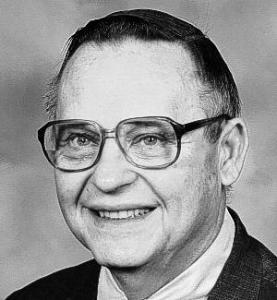


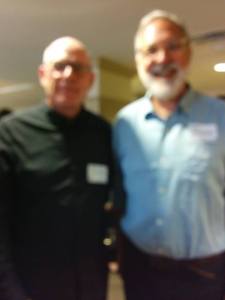

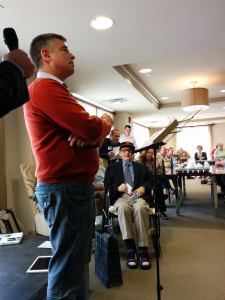





































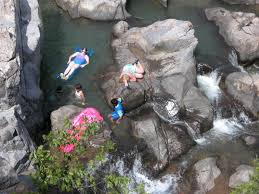



















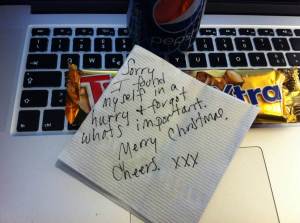























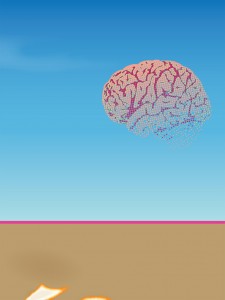















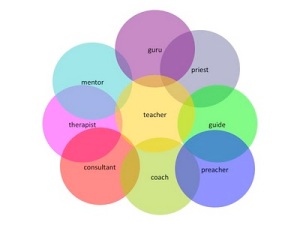
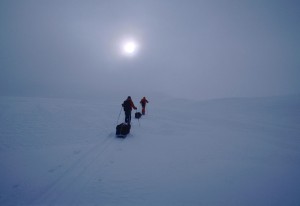









![Reddit user, ‘Hannernanner’, shared the photo above and wrote; “Actually, I am in law enforcement. There were many dogs at this residence that were removed by animal control, but considering his disability and how full our animal stays, I knew he wouldn’t last long. So I took him to the vets… They cleaned him up- tested him for parvo and distemper, gave him his shots, wormed him and all… I brought him home, hes happy and I found a home for him w[ith] a friend who can better care for him and devote more time to his disability.”](http://kindnessblogdotcom1.files.wordpress.com/2014/01/svexaxr.png)


You must be logged in to post a comment.